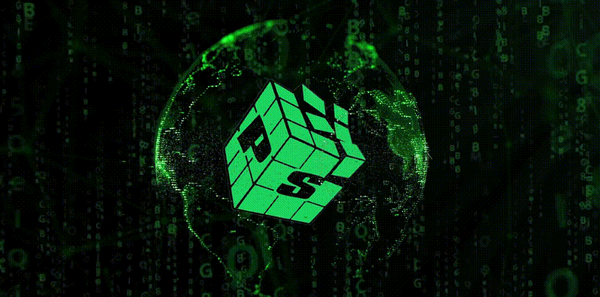Exploring Retro Tones: A Journey Through Timeless Music Styles

Retro tones have a way of pulling us back in time, don’t they? Whether it’s the synth beats of the 80s or the soulful melodies of the 70s, these sounds bring a sense of nostalgia that’s hard to resist. They’re not just about music either—retro vibes are everywhere, from fashion to visual design. This article dives into the timeless charm of retro tones, exploring how they continue to inspire modern culture.
Key Takeaways
- Retro tones tap into nostalgia, making them popular across music, fashion, and design.
- The 80s and 70s were pivotal eras that heavily influence today’s retro trends.
- Modern artists and designers blend old-school techniques with new technology to create fresh yet familiar works.
- Retro-inspired fashion accessories, like vintage sunglasses or scarves, add a unique touch to contemporary styles.
- Retro tones bridge generational gaps, offering something relatable for both young and old audiences.
The Allure of Retro Tones in Modern Music

How Synthwave Revives the 80s Sound
Let’s be real—there’s something magical about the lush, neon-soaked vibes of 80s music, and Synthwave has nailed it. It’s like stepping into a time machine, but with better production quality. Those shimmering synths, pulsing basslines, and dreamy melodies? They’re not just sounds; they’re emotions bottled up in a track. What’s cool is how modern producers blend these retro elements with today’s tech, creating something nostalgic yet fresh. It’s a love letter to an era when music wasn’t just heard—it was felt.
The Emotional Pull of Nostalgic Lyrics
Ever notice how some songs just hit you right in the feels? Retro-inspired tracks often lean into lyrics that evoke memories—whether it’s about first loves, long summers, or even heartbreak. These songs don’t just tell stories; they remind us of our own. They’re like flipping through an old photo album, where every line and melody brings a flood of emotions. It’s no wonder we keep going back to them—they feel like home.
Blending Old-School Beats with New Tech
Now, this is where things get really interesting. Artists today are mixing vintage drum machines, like the iconic Roland TR-808, with cutting-edge software to craft beats that feel both timeless and futuristic. It’s not just about copying old styles; it’s about reimagining them. Picture this: a classic Motown groove layered with a modern electronic twist. Or a disco beat paired with trap hi-hats. The result? Music that bridges generations and gets everyone moving, whether you’re on the dance floor or just vibing at home.
Iconic Eras That Shaped Retro Tones
The Synth-Heavy 80s Revolution
Ah, the 80s—a time when synthesizers were king, and music felt like it was beamed in from the future. Synth-pop, with its electronic beats and dreamy melodies, became the defining sound of the decade. Bands like Depeche Mode and The Human League turned synthesizers into emotional storytelling machines. Synth-pop wasn’t just about the music; it was a whole vibe. Neon lights, arcade games, and bold fashion all played into this futuristic aesthetic. It’s no wonder modern artists keep dipping into this era for inspiration—those beats just hit different.
90s Grunge Meets Retro Revival
The 90s were chaotic in the best way possible. While grunge gave us angsty lyrics and flannel shirts, there was also a growing fascination with retro styles. Bands started blending their raw, gritty sound with old-school influences—think vinyl crackles and vintage guitar tones. It was like they were saying, “Yeah, we’re moody, but we still respect the classics.” This era taught us that retro doesn’t have to be polished to be powerful; sometimes, it’s the imperfections that make it timeless.
Timeless Melodies of the 70s
The 70s were all about groove and soul. Whether it was the smooth funk of Earth, Wind & Fire or the heartfelt ballads of Fleetwood Mac, this era gave us songs that still make us feel something deep. The 70s had a knack for creating melodies that stick with you, whether it’s a funky bassline or a haunting vocal harmony. It’s like every song was designed to be played on repeat. And let’s not forget the analog warmth of the recordings—something today’s digital music often tries to recreate but rarely matches.
Retro Tones in Visual Design
The Bold Colors of the 80s Aesthetic
Let’s be real—few things scream retro like the bold, in-your-face colors of the 80s. We’re talking electric blues, neon pinks, and bright yellows that practically jump off the page (or screen). This fearless use of vibrant hues can inject energy into any design. But here’s the trick: balance is key. You don’t want your design to look like a highlighter exploded. Try pairing those bold tones with muted or earthy colors to create contrast and keep things visually interesting. For example:
| Bold Color | Muted Pairing |
|---|---|
| Neon Pink | Dusty Gray |
| Electric Blue | Warm Beige |
| Bright Yellow | Soft Pastel Green |
These combos give you that retro vibe without overwhelming the senses.
Geometric Patterns That Define Retro
Shapes, man. The 80s and 70s were all about geometric patterns. Circles, triangles, zigzags—you name it. These shapes weren’t just random; they were layered and arranged in ways that felt playful yet structured. You can experiment with overlapping shapes or even mosaic-style layouts. Here’s a quick cheat sheet for retro-inspired patterns:
- Polka Dots: Classic and easy to integrate.
- Chevron Stripes: Adds movement and energy.
- Abstract Shapes: Think asymmetrical and a little chaotic.
The beauty of these patterns? They instantly transport people to a different time.
How Vintage Fonts Set the Mood
Fonts do a lot of heavy lifting in retro design. A good typeface can take your audience straight back to the era you’re channeling. Look for fonts with exaggerated serifs, funky curves, or geometric letterforms. Here are a few tips:
- Display Fonts: Perfect for headlines or attention-grabbing phrases.
- Distressed Effects: Add some texture to make your fonts look aged and authentic.
- Keep It Legible: Cool fonts are great, but if no one can read them, what’s the point?
When you pair the right font with bold colors and geometric patterns, you’ve got a recipe for a design that feels both nostalgic and fresh.
Retro design isn’t just about looking old-school; it’s about capturing a feeling. Whether it’s a sense of whimsy, playfulness, or even rebellion, these visual elements pull people in and take them on a journey.
Fashion’s Love Affair with Retro Tones
Throwback Trends in Modern Wardrobes
Let’s be real – retro fashion has this magical way of sneaking into our closets without us even noticing. High-waisted jeans, anyone? Or maybe that oversized blazer you swore you’d never wear again? The charm of retro trends is how they mix nostalgia with modern vibes. It’s like borrowing from the past but making it totally your own. Think of pairing a 70s-inspired boho dress with sleek, minimalist sneakers or rocking a 90s grunge flannel over a contemporary graphic tee. The trick is balance – let one retro piece shine while keeping the rest of your outfit fresh and current.
Accessories That Channel Nostalgia
Accessories are where the retro magic really happens. A vintage scarf casually tied around your neck or a pair of cat-eye sunglasses can take a simple outfit to a whole new level. And let’s not forget the timeless appeal of a classic leather handbag – it’s both practical and stylish. Here’s a quick list of retro-inspired accessories that are easy to incorporate into any wardrobe:
- Chunky platform shoes (hello, 70s disco vibes)
- Bold, geometric jewelry
- Wide-brimmed hats or berets
Adding even one of these can make your outfit feel more curated and unique.
The Role of Music in Retro-Inspired Fashion
Music and fashion have always been besties, haven’t they? Think about it: Elvis had his leather jackets, the Beatles had their mod suits, and grunge wouldn’t be grunge without flannels and Doc Martens. Retro-inspired fashion often pulls directly from the music scenes of the past. For instance, the resurgence of 80s power dressing with shoulder pads and bold prints? Totally influenced by the glam rock and pop stars of that era. It’s like wearing a piece of history, but with your own twist.
Retro fashion isn’t just about looking cool – it’s a way to connect with the stories and vibes of the past while staying firmly planted in the present. It’s timeless, it’s personal, and it’s always evolving.
Why Retro Tones Resonate Across Generations
The Comfort of Familiar Sounds
Let’s be real—there’s something about hearing an old song that just feels like home. Whether it’s the crackle of vinyl or the unmistakable hum of an analog synth, these sounds take us back to simpler times. They’re like a warm blanket for the soul. Maybe it’s because they remind us of childhood road trips, family gatherings, or even the first time we fell in love. Whatever the reason, these familiar tones offer a sense of comfort that’s hard to match in today’s fast-paced world.
How Retro Music Bridges Generational Gaps
Ever noticed how a classic track can get everyone in the room nodding along, from your grandma to your teenage cousin? That’s the magic of retro music. It’s a shared language that connects us across age groups. Whether it’s The Beatles, Prince, or Nirvana, these artists created music that stands the test of time. And with streaming platforms making it easier than ever to access old-school hits, younger generations are discovering—and loving—the same tunes their parents grew up on. It’s like a family heirloom, but way cooler.
The Timeless Appeal of Simplicity
There’s beauty in keeping things simple, and retro tones nail it. Back then, music wasn’t about overproduced beats or flashy effects—it was about raw emotion and catchy melodies. That kind of authenticity is rare these days, making retro music feel fresh even decades later. Plus, simplicity makes it easier to connect with the music on a deeper level. No distractions, just pure vibes.
Creating Retro Tones in Today’s Music

Using Analog Synths for Authenticity
Let’s be real—nothing screams retro like the warm, rich sound of analog synths. Whether it’s a Moog, a Roland, or even a modern replica, these instruments give you that unmistakable vintage vibe. The beauty lies in their imperfections, from slight pitch variations to the way they saturate the sound naturally. If you’re not ready to invest in hardware, there are plenty of plugins out there that emulate analog synths pretty convincingly. Just tweak those oscillators and filters, and you’re halfway to an 80s masterpiece.
Layering Vocals for a Vintage Feel
Vocals are a big deal when you’re going for that retro sound. Back in the day, producers would layer vocals thickly, often doubling or tripling tracks to get that lush, dreamy effect. Try adding a touch of reverb or even some tape delay to your vocal tracks—it’s like an instant time machine. And don’t forget to experiment with EQ to roll off some of the high-end frequencies, giving your vocals that warm, lo-fi edge.
Reimagining Classic Tracks for Modern Audiences
Sometimes, the best way to channel retro tones is by reworking a classic. Take a song everyone knows and loves, then flip it on its head. Maybe slow it down, add some synth pads, or even throw in a funky bassline. The trick is to keep the essence of the original while adding your own twist. Nostalgia is powerful, and when done right, it can feel both fresh and familiar.
Retro tones aren’t just about mimicking old sounds—they’re about capturing a feeling. Whether it’s the warmth of analog gear or the emotional pull of a reimagined classic, this style invites us to connect with music in a deeply personal way.
For more on achieving that authentic sound, check out how to achieve a vintage audio sound using techniques like tape emulation and bit-depth reduction. It’s all about those little details that make the difference.
The Cultural Impact of Retro Tones
Retro Music as a Form of Storytelling
Retro music is more than just catchy tunes—it’s like opening a time capsule. Each song tells a story, painting a picture of the era it came from. Whether it's the rebellious spirit of 70s rock or the synth-driven optimism of the 80s, these songs capture the mood and struggles of their time. They’re like little audio diaries of history. And when we listen, we’re not just hearing music; we’re hearing stories about love, change, and everything in between.
How Retro Tones Influence Pop Culture
You can’t miss how retro vibes have seeped into everything—movies, TV shows, even video games. Think about how 80s synthwave is the backbone of so many modern soundtracks. It’s not just nostalgia; it’s a way of bringing old-school charm into today’s world. Retro tones are like that secret ingredient that makes something feel both familiar and fresh. And let’s be honest, who doesn’t love a good throwback?
The Enduring Legacy of Iconic Artists
Artists like Bowie, Prince, and Madonna didn’t just make music—they built legacies. Their work still inspires today’s musicians, proving that good art never really fades away. Even now, you can hear echoes of their influence in everything from indie tracks to chart-topping hits. It’s wild to think how their creativity shaped not just their time but ours too. Retro tones remind us that the past is never really gone—it’s just waiting to inspire the next big thing.
Retro tones have made a big splash in our culture, influencing everything from music to fashion. These nostalgic sounds bring back memories and connect us to the past in a fun way. If you're curious about how these vibes shape our world today, check out more on our website!
Wrapping It Up
So, there you have it—a little trip down memory lane with some retro vibes to keep things interesting. Whether it’s the music, the fashion, or just the overall aesthetic, there’s something about these timeless styles that keeps pulling us back. Maybe it’s the nostalgia, or maybe it’s just that some things never really go out of style. Either way, exploring these retro tones is like finding a treasure chest of creativity and inspiration. So, crank up that synthwave playlist, throw on your favorite vintage tee, and let the past fuel your present. Until next time, keep it retro!
Frequently Asked Questions
What are retro tones in music?
Retro tones in music refer to sounds and styles inspired by past decades, such as the 70s, 80s, or 90s. These tones often use vintage instruments, nostalgic melodies, and production techniques to capture the vibe of earlier eras.
Why are retro tones so popular today?
Retro tones are popular because they evoke feelings of nostalgia and familiarity. They remind people of simpler times and often bring a sense of comfort and connection across generations.
How do modern artists create retro tones?
Modern artists create retro tones by using analog synthesizers, layering vintage-style vocals, and blending older production techniques with contemporary technology. They may also reimagine classic tracks to give them a fresh twist.
What music genres commonly use retro tones?
Genres like synthwave, retrowave, indie pop, and even modern rock often use retro tones. These styles incorporate elements like 80s synths, 70s melodies, or 90s grunge influences.
Can retro tones be found in other areas besides music?
Yes, retro tones influence visual design, fashion, and even film. Bold colors, geometric patterns, vintage fonts, and nostalgic clothing trends are all examples of retro tones outside of music.
How do retro tones bring generations together?
Retro tones bridge generations by blending the familiar sounds of the past with modern twists. This allows older listeners to relive their memories while introducing younger audiences to timeless styles.





